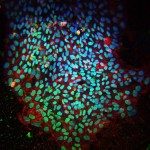Link to Pubmed [PMID] – 28671755
Link to DOI – 10.1002/minf.201700020
Mol Inform 2017 Oct; 36(10):
Nuclear receptors (NRs) constitute an important class of therapeutic targets. During the last 4 years, we tackled the pharmacological profile assessment of NR ligands for which we constructed the NRLiSt BDB. We evaluated and compared the performance of different virtual screening approaches: mean of molecular descriptor distribution values, molecular docking and 3D pharmacophore models. The simple comparison of the distribution profiles of 4885 molecular descriptors between the agonist and antagonist datasets didn’t provide satisfying results. We obtained an overall good performance with the docking method we used, Surflex-Dock which was able to discriminate agonist from antagonist ligands. But the availability of PDB structures in the “pharmacological-profile-to-predict-bound-state” (agonist-bound or antagonist-bound) and the availability of enough ligands of both pharmacological profiles constituted limits to generalize this protocol for all NRs. Finally, the 3D pharmacophore modeling approach, allowed us to generate selective agonist pharmacophores and selective antagonist pharmacophores that covered more than 99 % of the whole NRLiSt BDB. This study allowed a better understanding of the pharmacological modulation of NRs with small molecules and could be extended to other therapeutic classes.


